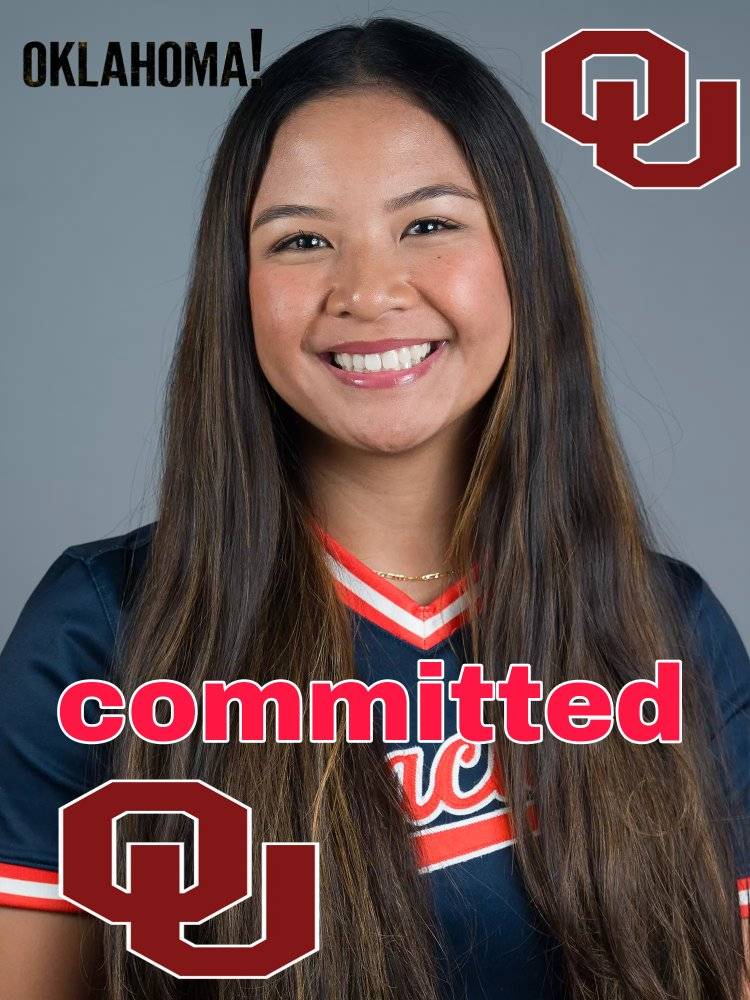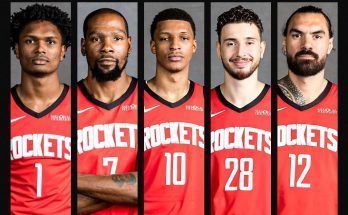The country’s No. 1 football recruit has pledged to Oklahoma, choosing the Sooners over Alabama, BYU, and Tennessee.
The nation’s top football prospect choosing Oklahoma over Alabama, BYU, and Tennessee is more than a recruiting headline; it’s a signal flare about ambition, timing, program identity, and the shifting power dynamics of modern college football. When the consensus No. 1 player in the class decides where to spend the next three to four developmental years, he isn’t just picking a campus—he’s selecting a performance lab, an NFL launching pad, a brand ecosystem, and a personal growth environment. Oklahoma winning that bet speaks volumes about what the Sooners have built (and are still building) as they transition deeper into life in the SEC, about how they sell development on both sides of the ball, and about their ability to close elite national battles where bluebloods and niche-fit programs alike made a serious run. For fans who track recruiting only casually, the storyline might look simple: best player, big brand, decision made. But inside coaching offices and collective war rooms across the country, this is the kind of commitment that reshapes boards, flips contingency plans, and forces defensive and offensive coordinators to reimagine what their roster ceiling looks like two and three years down the road.
Start with the competitive pool. Alabama represents the gold standard of the recruiting-industrial complex—years of NFL churn, championship expectation, and an institutional familiarity with the pressure that comes from signing generation-defining talents. Even as the program evolves post-Nick Saban, the Crimson Tide name still recruits itself in living rooms from the Gulf Coast to the Pacific Northwest, and turning them down means the player and his circle saw something more compelling in Norman. Tennessee, meanwhile, offers offensive fireworks and a fan base that will wrap its arms around a superstar from day one; the Vols have become one of the nation’s loudest NIL environments and have proven they can build an explosive statistical platform for skill players and, increasingly, front-seven disruptors. BYU may be the outlier to casual observers, but its distinct culture, national recruiting reach within faith networks, and increasingly competitive Big 12 footprint make it a serious consideration for families prioritizing fit, stability, and values alignment. To beat all three—historic juggernaut, stylistic spotlight, and cultural community—Oklahoma had to present a pitch that blended development clarity, competitive trajectory, and modern player empowerment in precisely the right proportions.
What does “development clarity” mean in this context? For elite recruits and their advisors, the conversation now goes well beyond depth chart buzzwords. Families ask: How soon will my son see meaningful snaps that matter? Who will coach him day-to-day, and what’s that coach’s NFL track record by position? What are the data points on sports science, recovery tech, nutrition, and body transformation from freshman summer to draft declaration? Oklahoma’s recruiting staff has leaned into transparency—sharing individualized player development roadmaps that map measurables, skill benchmarks, film study goals, and schematic integration windows. When the top-ranked recruit sees not just hype but a concrete month-by-month performance progression, the decision calculus shifts. Add in Oklahoma’s growing strength and conditioning infrastructure—long a point of pride and recently upgraded to match SEC standards—and the Sooners can credibly argue that a raw athletic marvel will be refined, not just featured.
Of course, opportunity matters too. Signing with an SEC program that is still new enough to the league to sell upward mobility can be appealing in ways that entrenched superpowers sometimes can’t replicate. At Alabama, every rep is contested by waves of five-stars; that’s attractive to some, but others want a balance—iron sharpens iron, yes, but meaningful early reps accelerate game-speed learning. Oklahoma can now point to a roster in transitional flux, one where immediate contribution is possible without the chaos of a total rebuild. The staff can say: “You will compete, but we recruited you because we think you shift the competitive baseline the moment you walk in.” That’s a powerful framing for a player confident in his readiness but still seeking a program that won’t stash him behind upperclassmen out of habit or hierarchy.
The offensive and defensive schematics Oklahoma runs also give them a recruiting differentiator depending on the prospect’s position profile—and while we’re being position-neutral here to keep the focus on the decision dynamic rather than speculation, the key principle holds: elite recruits want scheme flexibility that lets their traits show up on film in ways NFL scouts immediately recognize. The Sooners have blended tempo spread elements with pro-style structure, more multiple fronts on defense, and matchup-driven sub-packages that showcase length, speed, and versatility. For a top prospect, being moved around—boundary, slot, edge, hybrid backfield, rover—translates into draft capital when done intentionally. Programs that stick players in static alignments can rack up college production, but evaluators often ask whether the player was maximized or merely used. Oklahoma’s recent tendency toward adaptability likely helped close the deal.
NIL inevitably hovers over every modern blue-chip recruitment, but it’s simplistic to assume the highest number always wins. Families increasingly evaluate sustainability, contract structure, community integration, and post-college branding pathways. A headline figure spread across performance triggers, academic progress incentives, and media deliverables can be more attractive than a flashy short-term guarantee from a collective that may or may not sustain funding year over year. Oklahoma’s collectives have worked to professionalize how deals are structured, leaning on compliance transparency and corporate partnerships that extend value into life-after-football networking. When a recruit’s inner circle sees that the program isn’t just promising dollars but building a platform—merch collaborations, charity tie-ins, digital content series—that can grow alongside on-field success, the long game becomes persuasive.
Turning down BYU and Tennessee also hints at how the player and his family weighed environment versus exposure. BYU’s distinct community offers support systems some athletes prize; choosing elsewhere suggests the recruit prioritized the crucible of SEC competition and broader national visibility. Tennessee’s offensive showcase is undeniable, so opting for Oklahoma could reflect a belief that he’ll be developed more completely—even if raw numbers elsewhere might be wilder. These readings are never perfect, but college staffs pore over decisions like this to reverse-engineer what today’s elite recruits actually value. Expect to see subtle strategic adjustments ripple outward: Tennessee doubling down on defensive development messaging to complement its offensive sizzle, Alabama sharpening proof-of-playtime data for freshmen in the new era, BYU highlighting pathways for national awards beyond conference identity.
From the Oklahoma perspective, momentum begets momentum. Landing the top-ranked recruit often catalyzes peer-to-peer recruiting; elite players talk, group chat, and compare notes about facilities, staff authenticity, and how they were treated on unofficials. When one nationally respected talent plants a flag, others feel safer making the same leap. Watch for a cluster effect—maybe not all No. 1-type talents, but a ring of complementary four- and five-star players who see an opportunity to be part of a class that defines Oklahoma’s first fully “SEC-proofed” roster. That matters on the field, but it also fuels donor enthusiasm, ticket renewals, and media coverage cycles that become self-reinforcing. In recruiting, perception shapes reality; reality, once reinforced on Saturdays, locks in future cycles.
This commitment should also be read through the lens of roster balance and retention. Signing a generational recruit is step one; keeping him engaged, healthy, and ascending through the portal era is step two, three, and four. Oklahoma’s staff will now be tested in culture stewardship. The presence of a No. 1 recruit can elevate practice standards, but it can also introduce locker-room dynamics—jealousy, NIL comparisons, expectations of playing time—that must be proactively managed. Programs that succeed with top-of-class talents build leadership councils, mentorship pairings with trusted veterans, and clear communication loops so that the star feels heard without being privileged above team accountability. Given the programs Oklahoma beat out, you can assume those culture questions were asked directly and answered convincingly.
For fans, the emotional rush of “we got him!” always invites big, premature projections: Heisman talk, All-America buzz, instant impact in Game One. The healthier framing is to celebrate the win while honoring the developmental arc all freshmen face—strength adaptation, playbook language, college academic rhythm, life away from home. If the player redshirts, it’s not failure; if he rotates situationally before starting full-time, it’s not underuse; if he flashes brilliance and inconsistency in equal measure, that’s normal. The ceiling that made him No. 1 nationally remains, and a patient, structured climb often yields a more complete, durable pro prospect than a meteoric-but-fragile freshman star. Oklahoma’s messaging to its fan base will matter: expectation management is part of protecting the athlete and the investment.
Zoom out, and this commitment is another data point in the broader nationalization of recruiting geography. Thirty years ago, proximity heavily influenced even the most hyped signings; now, national television, offseason 7-on-7 circuits, private coaching networks, and NIL-negotiation platforms have flattened distance. That Oklahoma could battle Alabama (Deep South legacy), Tennessee (regional SEC draw with national ambitions), and BYU (cultural-national reach) and win underscores that modern blueblood status is earned annually through alignment—athletic department, coaching continuity, infrastructure spend, and brand storytelling. The Sooners’ victory in this recruitment suggests their alignment is resonating.
In the months ahead, the real work begins: enrolling, integrating, developing, and translating potential into production. Yet even before the first rep in fall camp, Oklahoma has already gained something tangible—proof that its message competes at the highest tier of the recruiting marketplace. When the top-ranked recruit says “I trust you” with his future, it validates every investment made in facilities, staff retention, analytics, and player support. It also raises the bar: recruits now expect Oklahoma to turn this kind of win into on-field results against the SEC’s nastiest schedules. That challenge is enormous, but it’s exactly the kind of stage elite talents sign up for. And now, thanks to this decision, the Sooners have the kind of foundational star around whom an era can be built—if they capitalize, stay patient, and keep stacking classes that believe in the same vision.



